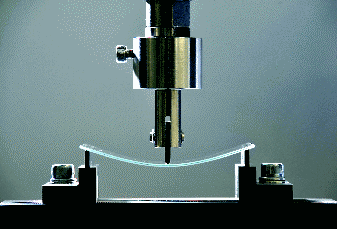Two Industry Giants Based in Asia Unveil Technology at Display Week
by Jenny Donelan
The Beijing-based Hanwang is an extremely well-known name in China, where the com-pany enjoys a 70% share in the e-reader market, the largest in that country. In fact, Hanvon (the company and brand name used outside of China) is the fourth largest e-reader company in the world, after Amazon, Barnes & Noble, and Sony. It also manufactured the first e-reader featuring E Ink's new color-imaging technology, Triton.
Hanvon would like to become very well-known in North America too, which is one reason why the company chose to exhibit at Display Week for the first time ever this year. Hanvon also had a new display technology to show – a dual-touch e-reader system that enables both finger and stylus input, shown at Display Week in combination with E Ink's electrophoretic technology. The company's approach utilizes electromagnetic resonance (EMR) technology. As DisplaySearch analyst Jennifer Colegrove noted in the DisplaySearch Blog covering Display Week, "What makes it unique is that the sensors are located beneath an e-paper display (from E Ink Holdings) – there is no touch sensor in front of the display. Hanvon developed the technology by adding several capacitors to a conventional digitizer touch sensor … it works by adding an antenna network just above the sensor board." This technology, adds Colegrove, can easily be added to any existing manufacturing process.
The company claims the dual-mode technology is able to outperform comparable capacitive, resistive, and acoustic-pulse-recognition technologies in precision, data report rate, and ease of use.
I had a chance to try a prototype e-reader at Display Week, and being able to use both finger touch and stylus is pretty neat. You can annotate text and write your own notes on a separate page and save the notes. You cannot, however, use both input "devices" at the same time. The prototype, at least, required you to switch between them. This is probably useful in terms of eliminating the potential for inadvertent touches when in stylus mode.
Hanvon is planning to commercialize the new technology in its e-readers in the second half of this year, starting with the Chinese market. It is currently commercially available to manufacturers in the U.S. and the rest of the world. For more about the Hanvon dual-mode technology, including a diagram, see the Touch Technology review from Display Week also in this issue.
Another powerhouse manufacturer that has been seeking increased North American visibility is Asahi Glass Company (AGC). The Japanese firm has been around since 1907, employs about 50,000 people around the world, and has annual global sales of approximately $US15 billion. It has the number-one global market share in architectural glass, automotive glass, and glass substrates for AMOLED displays, LTPS, PDPs, and projected-capacitive touch screens. It is number two for TFT glass substrates.
At Display Week, Asahi was showing Dragontrail, a chemically strengthened glass material designed for high-quality cover glass used in screens for electronic devices (Fig. 1). Dragontrail, which is being marketed as a competitor to Corning's Gorilla Glass, is, in the words of the company, "six times stronger than conventional soda-lime glass, highly resistant to scratches, and features a beautiful, pristine finish compared with resin." Dragontrail is also free of arsenic, lead, and antimony.

Fig. 1: Dragontrail glass is extremely impact and scratch resistant and is being positioned as a competitor to Corning's Gorilla Glass.
AGC uses a highly efficient float process to manufacture Dragontrail, utilizing the company's extensive background in producing specialized glass for electronics. AGC also says it is poised to respond to growing demand for cover glass used in televisions as well as mobile devices. (Gorilla Glass has also been used in Sony televisions, for example.)
At Display Week, AGC also announced that it has developed ultra-thin sheet glass (not yet named) that is also manufactured using the float process, and measures just 0.1 mm, roughly the thinness of a sheet of paper. Made from alkali-free glass, which is used as a glass substrate for TFT-LCDs, this extremely thin sheet float glass is designed for use in next-generation displays, lighting, touch screens, and high-tech applications such as medical devices.
References
1http://www.displaysearchblog.com/2011/05/sid-display-week-2011-amoled-touch-and-3d-provide-excitement/. •